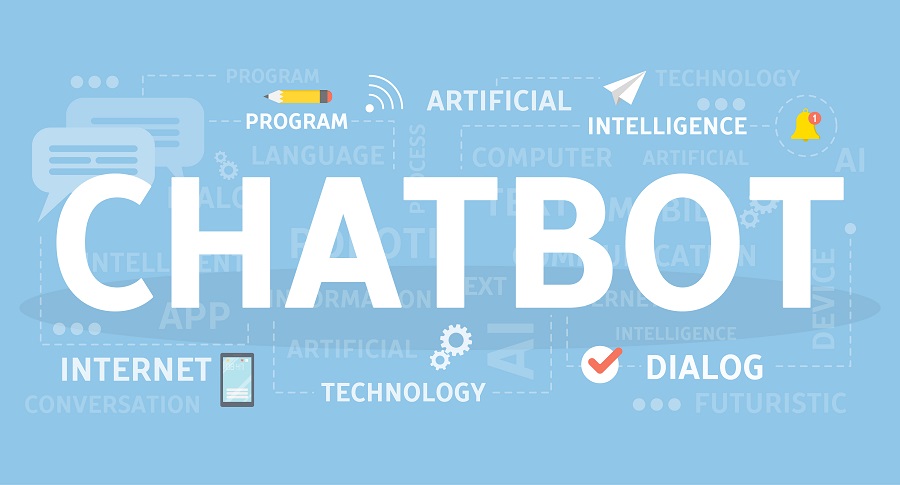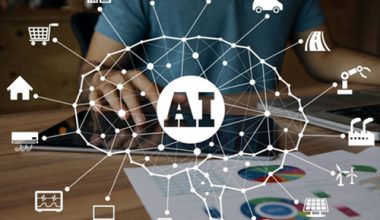In today’s fast-paced digital landscape, businesses are constantly seeking innovative ways to enhance customer engagement and streamline their operations. One technological phenomenon that has swiftly gained prominence in recent years is chatbots. These AI-driven conversational agents have reshaped the way companies interact with their customers and are poised to play an even more pivotal role in the future of customer service and beyond.

Unveiling the Potential: A Glimpse into Chatbots
Chatbots, the virtual avatars of AI, have proven their mettle in revolutionizing customer interactions. These digital assistants have transcended mere automation and have become a cornerstone of personalized customer experiences. By simulating human conversations, chatbots effectively bridge the gap between customers and businesses, providing real-time assistance, information, and solutions.
Enhancing Customer Experience through Personalization
In the pursuit of customer-centricity, businesses are harnessing the power of chatbots to create tailored experiences. Chatbots possess the ability to accumulate vast amounts of user data, enabling businesses to glean deep insights into customer preferences, behaviors, and pain points. Armed with this knowledge, companies can orchestrate personalized offers, recommendations, and solutions, thereby amplifying customer satisfaction and fostering brand loyalty.
Moreover, chatbots are proficient in identifying and anticipating customer needs through their conversational history. This proactive approach not only enhances the customer experience but also positions businesses as attentive and responsive partners in their customers’ journeys. By leveraging these insights, companies can curate interactions that resonate with customers, building a lasting emotional connection.
Empowering the Customer and Business Nexus
A pivotal hallmark of chatbots lies in their dexterity to empower both customers and businesses. For customers, chatbots are the epitome of convenience. They provide swift access to information, troubleshoot problems, and even aid in purchasing decisions, all without the limitations of business hours. On the other side of the spectru, businesses can utilize Chatbot services to engage with customers on a 24/7 basis, thereby optimizing resources and ensuring a seamless and consistent customer experience.
Additionally, Chatbot services contribute to streamlined customer journeys by reducing wait times and expediting issue resolution. Customers no longer need to navigate complex IVR systems or wait for an available agent. Instead, they can engage with a chatbot that understands their queries and guides them through solutions with unmatched efficiency.
The Unbreakable Duo: AI and NLP
As we gaze into the horizon of Chatbot services evolution, one trend that emerges prominently is the integration of Natural Language Processing (NLP). This AI subfield empowers chatbots to comprehend and generate human language naturally. The goal is to bridge the gap between customers and AI, fostering an environment where complex queries can be comprehended and responded to accurately. This shift not only augments the efficacy of customer interactions but also liberates human agents to focus on more intricate tasks.
NLP-equipped chatbots are rewriting the script of customer engagement. They can understand context, interpret nuances, and provide contextually relevant responses. For instance, a customer seeking assistance for a technical issue can engage in a detailed conversation with the Chatbot services, which not only diagnoses the problem but also offers step-by-step solutions. This level of sophistication enhances user satisfaction and paints chatbots as trusted companions rather than automated scripts.
Chatbots in the Corporate Ecosystem
Beyond customer interactions, chatbots are rapidly carving a niche within internal business communications. From assisting employees in navigating company protocols to aiding in HR-related tasks, chatbots are becoming indispensable components of modern workplaces. By automating mundane tasks and guiding employees through processes, chatbots contribute to increased productivity and streamlined operations.
For instance, chatbots can serve as knowledge repositories, answering employee queries about company policies, benefits, and procedures. They can even facilitate onboarding processes, guiding new hires through paperwork and familiarizing them with company culture. By serving as digital mentors, chatbots foster an environment of self-sufficiency and continuous learning within organizations.
The Melody of Voice-Bots
In an era where speed and efficiency reign supreme, voice-bots are orchestrating a symphony of convenience. As customers demand swifter ways of accessing information, voice search and text-based messaging platforms are becoming the choicest mediums for connecting with businesses. These voice-bots are transforming the way customers seek information, allowing for hands-free interactions and expediting the customer journey.
The integration of voice technology with chatbots is revolutionizing customer engagement. Customers can initiate conversations through voice commands, eliminating the need for manual text input. This seamless interaction fosters a sense of natural dialogue and expedites information retrieval. As customers increasingly gravitate towards voice assistants in their daily lives, businesses are adapting their chatbots to resonate with this preference, ensuring a harmonious and user-friendly experience.
A Human Touch through Live Chatbots
The trajectory of chatbots is poised to ascend higher, embracing a more human touch. Live chatbots are exemplars of this evolution, engaging with customers through natural and flowing conversations. These virtual agents are seamlessly integrated into sectors such as customer service and retail, simulating human interactions and fostering authentic connections.
Live chatbots possess the ability to interact with users in a conversational manner, mirroring the way humans communicate. They can understand nuances, express empathy, and adapt their responses based on the user’s tone and sentiment. This evolution bridges the gap between human agents and AI, providing customers with a holistic and personalized experience.
Embracing Tomorrow: The Way Forward
As businesses stand at the cusp of a new era, the future of chatbots gleams with promise. These AI marvels are not just tools; they are transformative companions in the journey towards customer-centricity, efficiency, and innovation. Through the amalgamation of AI, NLP, and evolving capabilities, chatbots are set to redefine customer engagement, empower internal operations, and herald a future where every interaction, be it customer or employee, is enhanced by their virtual presence.
In this digital epoch where the symbiotic alliance of technology and human experience reigns supreme, chatbots stand as emissaries of this synergy. The path forward is illuminated by the convergence of AI brilliance and the human desire for seamless and meaningful interactions. As businesses continue to embrace the potential of chatbots, the future is destined to be a realm where customer engagement transcends expectations, and the possibilities are as boundless as the capabilities of AI-driven chatbots themselves.






